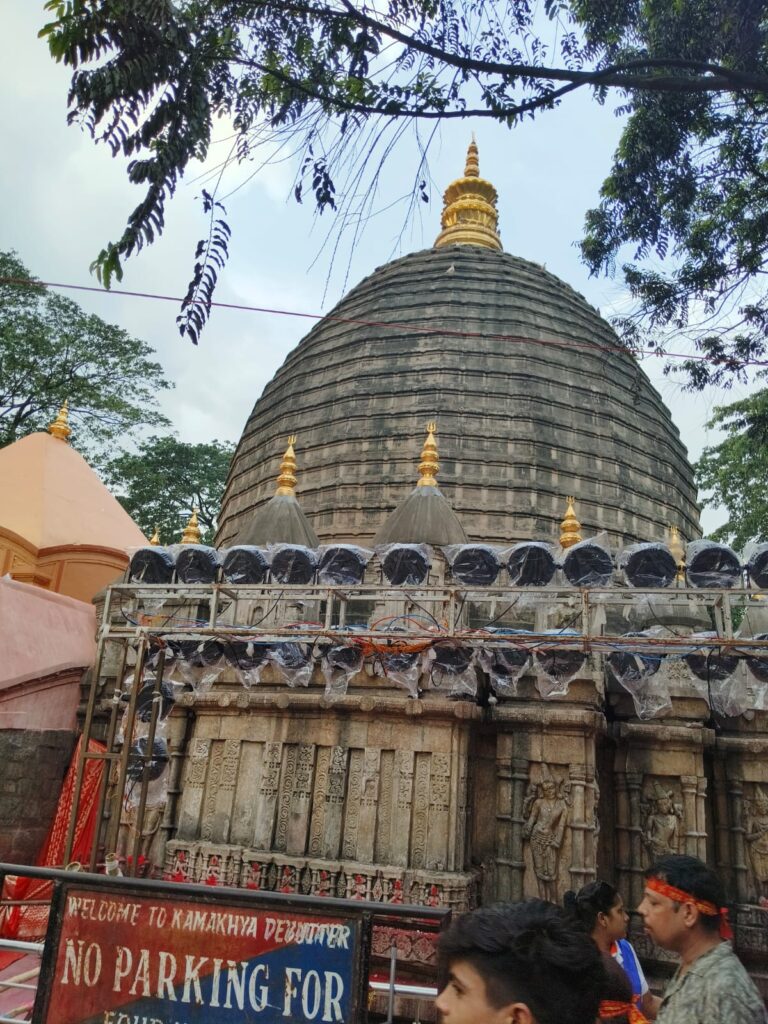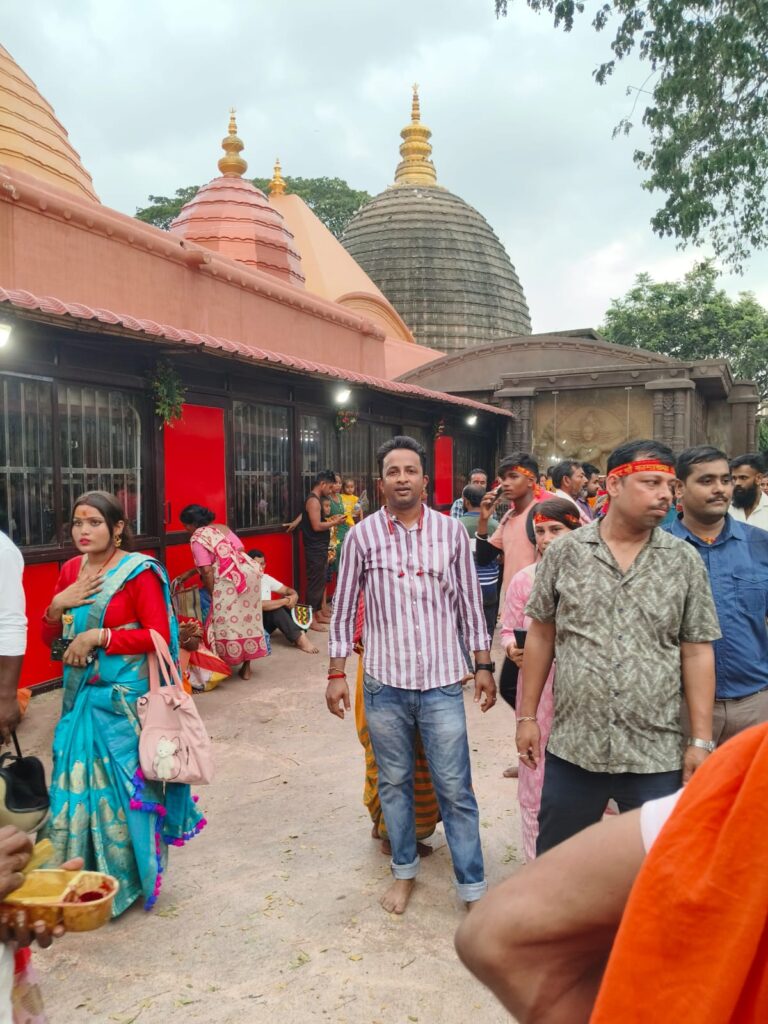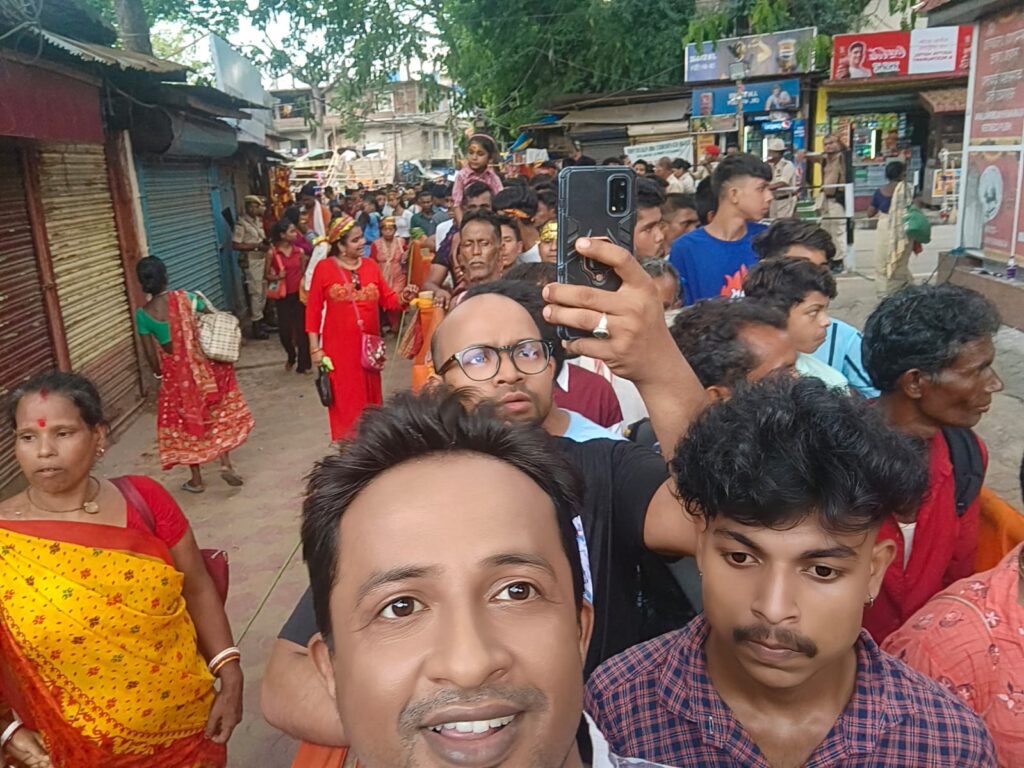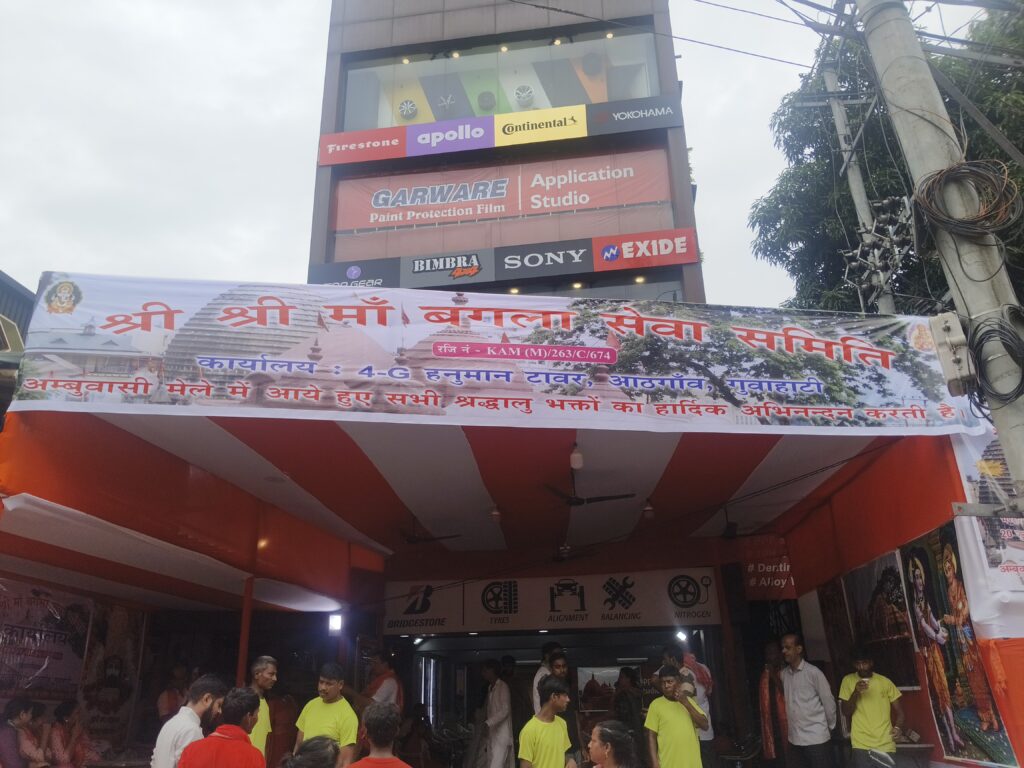
Location: Kamakhya Temple, Nilachal Hills, Guwahati, Assam
Festival Dates (2025): June 22 – June 26
Introduction
Every year in the month of June, the sacred hills of Nilachal in Guwahati come alive with spiritual fervor and mysticism during the Ambubachi Mela, one of India’s most unique and revered religious gatherings. Held at the ancient Kamakhya Temple, this festival celebrates the annual menstruation of Goddess Kamakhya, symbolizing fertility, creation, and the power of womanhood.

Often referred to as the ‘Mahakumbh of the East’, the Ambubachi Mela draws lakhs of devotees, Tantric sadhus, saints, and spiritual seekers from across India and abroad.
Spiritual Significance
Kamakhya Temple is regarded as one of the most powerful Shakti Peethas in Hinduism. It is believed to be the spot where the yoni (womb) of Goddess Sati fell when her body was dismembered by Lord Vishnu. Unlike other temples, Kamakhya does not have an idol of the goddess. Instead, it houses a stone shaped like a yoni that remains perpetually moist from an underground spring, symbolizing the creative power of life.
During Ambubachi, the goddess is believed to undergo her annual menstrual cycle. As a result, the temple remains closed for three days, and no farming, cooking, or worship is performed during this period in many homes across Assam. On the fourth day, the temple reopens, and devotees receive special blessings (prasad), believed to possess potent spiritual energy.
“Assam Tourism 2025: 10 Most Beautiful Places You Shouldn’t Miss”
🕉️ Kamakhya Temple – The Heart of Divine Feminine Power
Perched atop the Nilachal Hills, Kamakhya Temple is one of the most revered Shakti Peethas in India. Unlike most temples that house idols, Kamakhya Temple enshrines a stone formation shaped like a yoni (female genital), symbolizing the generative forces of the universe.
Devotees believe that the Divine Feminine Power present here blesses them with fertility, prosperity, and spiritual liberation. The temple complex becomes the epicenter of tantric rituals during the Ambubachi Mela, where sages, sadhus, and common pilgrims alike gather to seek blessings.
🌿 Rituals and Sacred Observances During Ambubachi Mela
The Ambubachi Mela follows a detailed ritualistic timeline spread across four main days:
1. Prabritti (Beginning of Seclusion)
On the first day, the temple doors close as the goddess is believed to enter her menstrual period. No religious activities or farming work is conducted during this time.
2. Amati (Period of Seclusion)
For the next two days, life in the region takes a sacred pause. Cooking, farming, and reading scriptures are suspended, reflecting nature’s rest period during menstruation.
3. Nibritti (Reawakening & Purification)
On the fourth day, the temple reopens in the early morning with special rituals. Devotees collect Angodak (holy water) and Angabastra (the cloth offered to the goddess) as sacred blessings symbolizing rebirth and purification.

Tantric Practices
The mela also witnesses the presence of Tantric practitioners, Aghori sadhus, and mystics who perform spiritual rituals and practices not seen elsewhere in the country. It is a rare cultural display of ancient Tantric traditions still alive in Assam.
🌍 Cultural Significance Beyond Religion
The Ambubachi Mela is not just a religious festival; it is a profound celebration of womanhood, fertility, and the acceptance of nature’s rhythms. By revering the goddess’s menstrual cycle, the festival breaks societal taboos surrounding menstruation, encouraging respect and acceptance of this natural process.
Women from across India visit the Kamakhya Temple during the Ambubachi mela, finding strength and inspiration in the goddess’s story and the cultural acknowledgment of feminine power.
Cultural and Social Impact
- Mass Participation: The mela attracts over 20 lakh pilgrims each year, turning Guwahati into a spiritual hub for four days.
- Economic Boost: The event also boosts the local economy with large-scale participation in hospitality, transport, and local handicrafts.
Government Support: The Assam government and Guwahati Municipal Corporation set up medical camps, shelters, food stalls, and water stations for the safety and comfort of pilgrims.
Travel Tips for Visitors
- Best Time to Visit: Plan to arrive a day before the mela begins (June 21 or earlier).
- Accommodation: Hotels near Paltan Bazaar and Fancy Bazaar get booked early. Make reservations in advance.
- How to Reach:
- By Air: Guwahati Airport (Lokpriya Gopinath Bordoloi International Airport), 20 km from the temple.
- By Train: Kamakhya Railway Station is the closest, followed by Guwahati Railway Station.
Access to Temple: Vehicles are allowed only till Kamakhya Gate. From there, pilgrims must walk barefoot approx. 3 km uphill.
Why Ambubachi mela is a Must-Experience Festival
- It celebrates menstruation as sacred—a rare and bold spiritual message.
- A unique blend of mythology, feminism, tantra, and tradition.
- Offers a powerful spiritual experience unlike any other festival in India.
Conclusion
The Ambubachi Mela is not just a religious festival—it is a powerful celebration of womanhood, nature, and cosmic cycles. Rooted in centuries-old traditions, it challenges taboos and opens doors to deeper spiritual wisdom. For travelers, seekers, and culture enthusiasts, attending the Ambubachi Mela is a once-in-a-lifetime opportunity to witness the mystical heritage of Northeast India.

🌄 Plan Your Trip to Northeast India with Us!
Want to explore the untouched beauty of the Northeast?
From the misty mountains of Mizoram to the living root bridges of Meghalaya, and the cultural heart of Assam — we’ve got you covered!
✅ Personalized Travel Itinerary
✅ Local Guides & 24/7 Support
✅ Best Hotel & Homestay Options
✅ Group Tours & Solo Packages
✅ Affordable, Safe & Hassle-Free
📩 Contact us today and let’s start planning your dream trip!
📞 Call/WhatsApp: 8453980642
🧳 Book your Northeast adventure now – Discover places you’ve only dreamed of!

